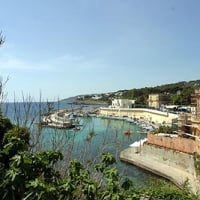Welcome to the new FlexRadio Community! Please review the new Community Rules and other important new Community information on the Message Board.
Need the latest SmartSDR, Power Genius, Tuner Genius and Antenna Genius Software?
SmartSDR v3.7.4 and the SmartSDR v3.7.4 Release Notes | SmartSDR v2.12.1 and the SmartSDR v2.12.1 Release Notes
SmartSDR v1.12.1 and the SmartSDR v1.12.1 Release Notes
Power Genius XL Utility v3.8.8 and the Power Genius XL Release Notes v3.8.8
Tuner Genius XL Utility v1.2.11 and the Tuner Genius XL Release Notes v1.2.11
Antenna Genius Utility v4.1.8
SmartSDR v3.7.4 and the SmartSDR v3.7.4 Release Notes | SmartSDR v2.12.1 and the SmartSDR v2.12.1 Release Notes
SmartSDR v1.12.1 and the SmartSDR v1.12.1 Release Notes
Power Genius XL Utility v3.8.8 and the Power Genius XL Release Notes v3.8.8
Tuner Genius XL Utility v1.2.11 and the Tuner Genius XL Release Notes v1.2.11
Antenna Genius Utility v4.1.8
If you are having a problem, please refer to the product documentation or check the Help Center for known solutions.
Need technical support from FlexRadio? It's as simple as Creating a HelpDesk ticket.
Need technical support from FlexRadio? It's as simple as Creating a HelpDesk ticket.
When is an arduino not an arduino?
Options

Dave - WB5NHL
Member ✭✭
I am in the process of developing in interface between my Flex 6500 and my ALS-600 linear amplifier using the arduino libraries developed by Enzo, IW7DMH. This device is very similar to the Ameritron ARI-500 but interfaced to a Flex. I will post more details when complete and tested. However, I have learned some lessons about the current arduino development environment that need to be shared.
1. arduino.cc and arduino.org are different organizations, both claiming to be the authentic arduino organization. Here is a site giving some history http://makezine.com/2015/03/19/massimo-banzi-fighting-for-arduino/ The impact is confusing in the extreme. Resolution to all of this is in the hands of lawyers and the courts.
2. The organizations both have similar hardware. Each organization provides its own Integrated Development Environment IDE. IDE version 1.7.6 (from .org) is NOT and update of version 1.6.5 (from .cc). They are different though using many similar libraries.
3. While much of the hardware and software MAY BE interchangeable and compatible..... caveat emptor. For example, ethernet shield v2 (from .org) uses the W5500 chip and the ethernet shield (from .cc) uses the W5100 chip. Even with the required changes to the ethernet libraries, Enzo and I have learned (painfully) that his arduino code is NOT interchangeable!!
The best advice if you are starting an arduino project is:
1. Learn which organization is being supported by the software author. In the case of Enzo and his Flex libraries, this is .cc and NOT .org
2. Check which organization is supporting/ supplying the hardware.
3. Avoid mixing products/ software from the different organizations. They may work or may not.
In summary, Enzo has developed a very powerful set of arduino Flex libraries. Enzo has been extremely helpful in sorting out software issues that have ultimately been traced to the incompatibilities noted above.
Dave, WB5NHL
1. arduino.cc and arduino.org are different organizations, both claiming to be the authentic arduino organization. Here is a site giving some history http://makezine.com/2015/03/19/massimo-banzi-fighting-for-arduino/ The impact is confusing in the extreme. Resolution to all of this is in the hands of lawyers and the courts.
2. The organizations both have similar hardware. Each organization provides its own Integrated Development Environment IDE. IDE version 1.7.6 (from .org) is NOT and update of version 1.6.5 (from .cc). They are different though using many similar libraries.
3. While much of the hardware and software MAY BE interchangeable and compatible..... caveat emptor. For example, ethernet shield v2 (from .org) uses the W5500 chip and the ethernet shield (from .cc) uses the W5100 chip. Even with the required changes to the ethernet libraries, Enzo and I have learned (painfully) that his arduino code is NOT interchangeable!!
The best advice if you are starting an arduino project is:
1. Learn which organization is being supported by the software author. In the case of Enzo and his Flex libraries, this is .cc and NOT .org
2. Check which organization is supporting/ supplying the hardware.
3. Avoid mixing products/ software from the different organizations. They may work or may not.
In summary, Enzo has developed a very powerful set of arduino Flex libraries. Enzo has been extremely helpful in sorting out software issues that have ultimately been traced to the incompatibilities noted above.
Dave, WB5NHL
0
Comments
-
This is very interesting, I haven't done any work with arduino's yet and wasn't aware of the competing organizations. Thanks for the info!0
-
Thank you so much for posting - I dived into my arduino box to figure out what I had and they are all from the .cc group - (along with my software downloads) although I purchased them from a large US parts supplier.
Also shows what hair-pulling fits software people have to go through when you get a little surprise like this along the path of development.
Thanks again and Cheers
0 -
Dear Dave,
thank you very much for this punctualization and for your patience during the test
I might not have said it better.
73' Enzo
0 -
Appreciate the link and background. Remotely working on an Arduino project with one of my sons KC9JGD we had stumbled on incompatibilities, and had switched to both using exactly the same hardware, but we never knew the background of the differences.
Looked in his project box (like any good young engineer on an overseas posting, he has dumped his kit in my house & garage) sure enough some of the parts he was working with are .cc and some .org.
Little mysteries explained. Thank you!
73
Steve K9ZW
0 -
How do you know which hardware is which? I bought a couple Chinese uno's and the seem to have trouble with one of Enzo's programs Also very interested in this project
730 -
First, Enzo's original libraries are NOT for the AVR architecture i.e Uno etc. His latest libraries will compile for both AVR and ARM architectures. However, his libraries are designed for Due and Mega boards, not Uno. I believe the programs are too large for the Uno memory. Also, Uno may not have the cpu speed depending on what you're doing.
To determine board compatibility, I would check the supplier web site for links to either .cc or .org This is the biggest clue. For example, Adafruit eithernet shield references .cc while Seeed Studio and Sparkfun point to .org.
0 -
His CW remote project is for a UNO r3 board
from his article:
"On the remote side the Arduino Uno is connected to the same network of the FlexRig."
However the picture in the article is of a Due board
73
0 -
Sorry, Lee I'm addressing his Flex libraries.
"The last version (1.1) of Arduino Flex Library can be compiled on both AVR boards (like Arduino Mega) and ARM boards (like Arduino Due)."
0 -
However the picture in the article is of a Due board
Hello Lee,
I hope your cw-remote key project is going on but which article are you referring to? There are no Due pictures in the CW-Remote project page.
In the mean time I read all the questions from other friends and I would like to suggest my "habits" about Arduino experiments.
When I start a project from scratch I prefer using the original .cc boards and shields. My experience is that .cc organization provide the best libraries and this means you can save a lot of time when things aren't as you expected. In addition their hardware has a good quality and often can survive to wrong connections or hardware issues.
After, when I have to rebuild the same project, I search for non original boards: if something is not working as I expect, I already know it is likely due to defective hardware.
Things are a bit more complicatet with .org items as they claim "original Arduino" as well. To get the difference you have only to search for the brand name on the board as the logo is identical.
@Dave
I believe the programs are too large for the Uno memory. Also, Uno may not have the cpu speed depending on what you're doing.
Yes, it is. If you try to compile the libraries for the Uno board you don't get compilation errors but you get a "Sketch too big;" error, so it is simply impossible to do.
Anyway I reworked my libraries for AVR boards because I am working on a CAT multiplexer project. I don't know if it will works, but my idea is to implement the same logic of SSDR-Cat using a MEGA board and up to five physical RS232 ports. If MEGA will have enough power it should also drive an eight port relay board for a simple band data system.
Thats all
73' Enzo
iw7dmh
1 -
Enzo: Please add my thanks for all the info on your most impressive Arduino project. Your efforts got me to pull an old Uno out of the junk box and start playing around with it. Just a learning exercise, but great fun. Think I will spring for a Due so I can experiment with Flex interface!
73, Tom
K1FR0
Leave a Comment
Categories
- All Categories
- 246 Community Topics
- 2.1K New Ideas
- 488 The Flea Market
- 7.1K Software
- 5.9K SmartSDR for Windows
- 134 SmartSDR for Maestro and M models
- 331 SmartSDR for Mac
- 243 SmartSDR for iOS
- 222 SmartSDR CAT
- 163 DAX
- 348 SmartSDR API
- 8.6K Radios and Accessories
- 6.9K FLEX-6000 Signature Series
- 766 Maestro
- 41 FlexControl
- 836 FLEX Series (Legacy) Radios
- 733 Genius Products
- 393 Power Genius XL Amplifier
- 255 Tuner Genius XL
- 85 Antenna Genius
- 229 Shack Infrastructure
- 153 Networking
- 370 Remote Operation (SmartLink)
- 120 Contesting
- 583 Peripherals & Station Integration
- 115 Amateur Radio Interests
- 813 Third-Party Software


